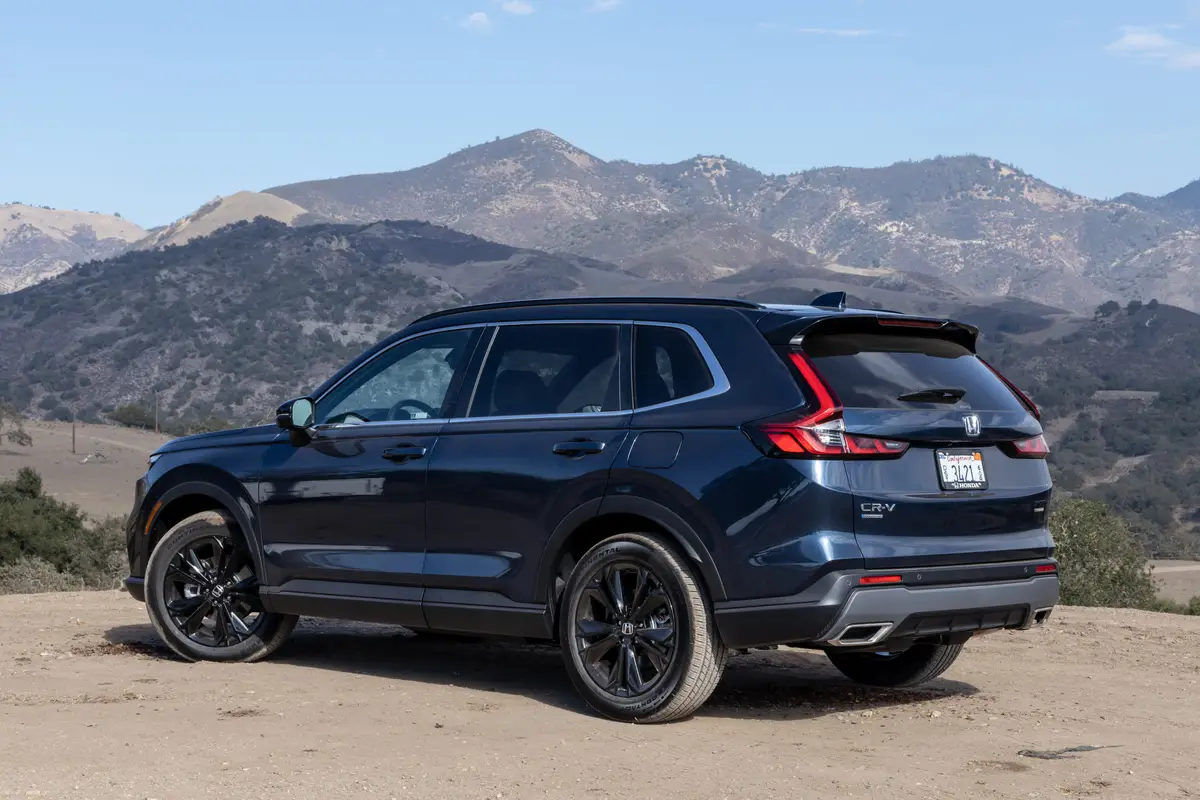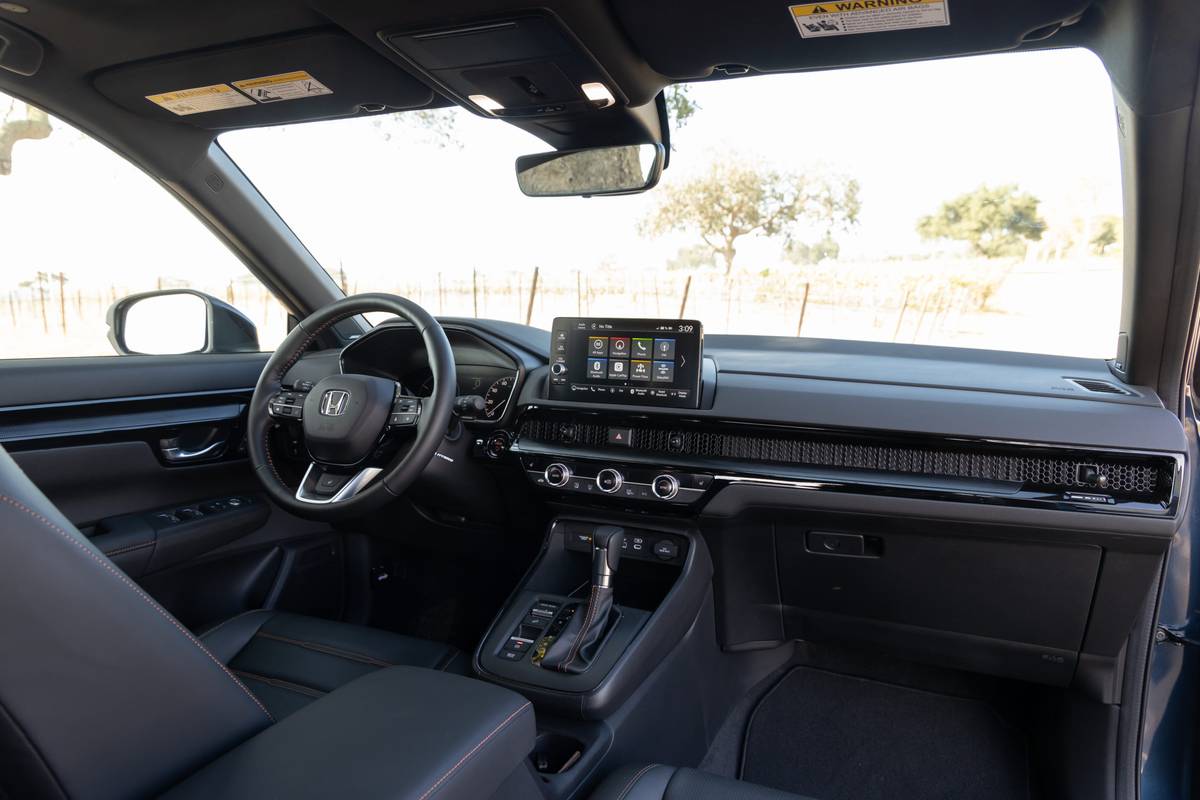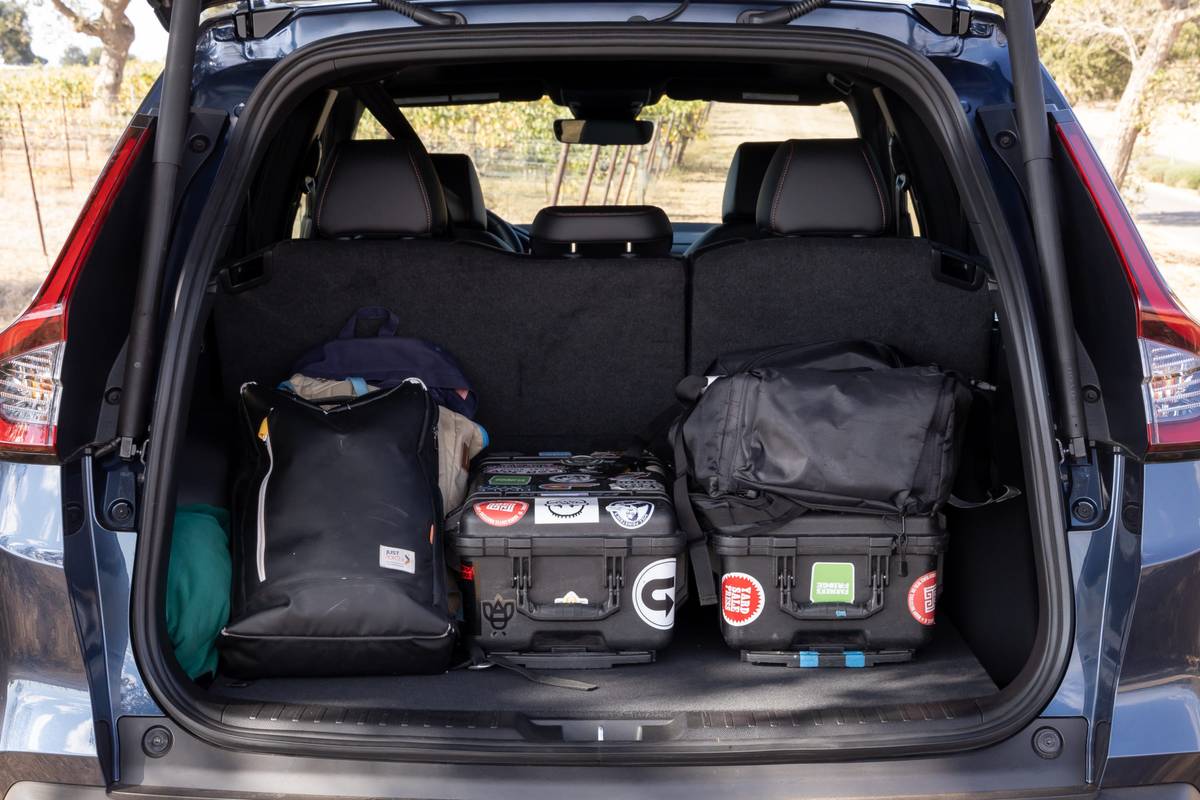Is the 2023 Honda CR-V a Good Compact SUV? 6 Pros and 4 Cons

The Honda CR-V has been a favorite with consumers since it debuted in 1997 as one of the first compact SUVs in North America. But it has not kept up in the marketplace, losing ground over the years to an increasing assortment of competitors with better designs. With the introduction of the redesigned 2023 CR-V, Honda has gotten back on track.
Related: 2023 Honda CR-V Review: Doing Its Civic Duty
The updated CR-V grows slightly in size, with a roomier, more upscale interior. The SUV gets new tech features, including an improved infotainment system. Four trims are offered: two hybrid and two with an updated version of the old 1.5-liter four-cylinder gas engine. The hybrid provides better performance, along with some other advantages.
Cars.com’s own Brian Normile recently had a chance to spend some time behind the wheel of both hybrid and non-hybrid versions of the 2023 CR-V, sampling different trim levels. While the new CR-V is a big improvement, not all is perfect. For his expert review, tap the link above. For a quicker look, here are six things we like and four things we don’t.
Things We Like

1. Happier Hybrid
The updated hybrid powertrain combines a 2.0-liter four-cylinder gas engine with two electric motors for a system total of 204 horsepower. That represents a slight bump in power compared to the outgoing hybrid, but the more significant improvement is a boost in torque from 232 pounds-feet to 247. That helps make the CR-V hybrid more responsive from a standstill, with quicker acceleration.
2. Better Handling
The hybrid handles better than the old CR-V, even if it isn’t exactly sporty to drive. Steering feel is improved, and the new CR-V tackles corners with more confidence. In spite of its increased size, the new CR-V feels more agile. This comes at the cost of some ride quality, but the ride remains comfortable.
3. Improved Interior
One of the most welcome improvements to the new CR-V is a vastly improved interior. Not only is it roomier than before, with better seats and a backseat that even adults will find comfortable, the cabin is constructed with better materials and controls that are easier to use. Physical controls have returned for climate and audio functions, and the overall design is clean and welcoming.
4. Straightforward Shifter
Another plus is that Honda has retired both the dashboard-mounted shifter used in gas versions and the even worse push-button setup in hybrid models in favor of a conventional lever mounted in the console. It’s right where it should be and is easy to use without looking down.
5. Enhanced Safety Features
Blind spot monitoring is now standard, and both camera and radar fields of view have been widened for better detection of people and objects. Airbags have also been redesigned for improved protection in the event of a collision.
6. Improved Cargo Space
Honda claims that the already spacious cargo area in the outgoing model has been improved with the redesign, with up to 3 cubic feet of additional space behind the rear seats. There’s also an available foot release for the power liftgate, making it easier to access the space when your hands are full.
More From Cars.com:
- 2023 Honda CR-V: More Power, More Room, More Hybrid
- 2023 Honda CR-V: Prices on the Rise, Hybrid MPG on the Slide
- What’s the Best Compact SUV?
- How We Found the Best Compact SUV
- Hybrid Head-to-Head: 2021 Honda CR-V Hybrid Vs. Toyota RAV4 Hybrid
Things We Don’t Like

1. Disappointing Gas Engine
Unfortunately, we weren’t as impressed with the gasoline version of the CR-V as we were with the hybrid. The 190-hp, 1.5-liter turbocharged four-cylinder engine is paired with a continuously variable automatic transmission and feels sluggish, especially from a standstill. Things get worse getting up to highway speeds, when the CR-V sounds noisy and strained under acceleration.
2. Compromised Visibility
Front visibility is improved over the old CR-V, but not so much to the rear. The rear middle seat belt is mounted in the ceiling, where it blocks a chunk of the view to the rear. Visibility aft is further compromised by rear-seat head restraints, small rear windows and thick pillars.
3. Mushy Brakes
As much as we like the improved driving experience in the new hybrid CR-V, the brakes leave a bit to be desired. The pedal feels mushy and lacks a linear feel. But Honda has provided a way to reduce use of the pedal altogether, with a “B” button on the shift lever that cranks up regenerative braking. It works well enough to slow the CR-V on hills, but it won’t bring it to a complete stop. Brakes in the gas versions have a more solid feel.
4. No Plug-in Hybrid
With features like regenerative braking for the hybrid CR-V, Honda is edging toward an electric future. But unlike Toyota with the RAV4 Prime, the automaker stops short of offering a PHEV version. Given the way the market is going and how enjoyable the RAV4 Prime is to drive, we think that is a regrettable choice.
Related Video:
Cars.com’s Editorial department is your source for automotive news and reviews. In line with Cars.com’s long-standing ethics policy, editors and reviewers don’t accept gifts or free trips from automakers. The Editorial department is independent of Cars.com’s advertising, sales and sponsored content departments.
Featured stories




